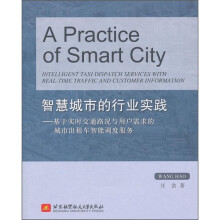CHAPTER 1 INTRODUCTION
1.1 RESEARCH BACKGROUND
1.2 SCOPE AND OBJECTIVES
1.3 GAP AND OPPORTUNITY
1.3.1 Current Booking
1.3.2 Advance Booking
1.4 METHODOLOGY OF STUDY
1.5 ORGANIZATION OF BOOK
CHAPTER 2 REVIEW OF TAXI OPERATION AND RELATED RESEARCH
2.1 CURRENT STATUS OF TAXI BOOKING AND DISPATCHING SYSTEMS IN SINGAPORE
2.1.1 Overview o{ Taxi Services in Singapore
2.1.2 GPS-Based Taxi Booking Service
2.1.3 How the Dispatch System Works or Current Bookings
2.1.4 How the Dispatch System Works or Advance Bookings
2.2 MODELING URBAN TAXI SERVICES
2.3 SHORTEST PATH PROPLEMS IN TRANSPORTATION MODELS
2.3.1 Shortest Path Tree Problem and Algorithms
2.3.2 Time Dependent Shortest Paths
2.4 CLASSICAL AND MODERN HEURISTICS.FOR THE VEHICLE ROUTING PROBLEM
2.4.1 Characteristics o{ Vehicle Routing Problems
2.4.2 Classical Heuristics {or Vehicle Routing Problems
2.4.3 Meta-Heuristics {or Vehicle Routing Problems
2.5 TRAFFIC SIMULATION MODERLS
2.5.1 GETRAM/AIMSUN
2.5.2 VISSIM
2.5.3 PARAMICS
2.5.4 Traffic Simulation Model Selection
2.6 SUMMARY OF REVIEW
CHAPTER 3 DISPATCHING BASED ON REAL-TIME TRAFFIC
CONDITIONS FOR TAXI CURRENT BOOKINGS
3.1 INTRODUCTION
3.2 METHOD OF INVESTIGATION
3.2.1 Shortcomings of the Existing System
3.2.2 Data Collection
3.2.3 The Study Network
3.2.4 API Programming
3.2.5 Simulation Runs
3.3 RESULTS AND ANALYSIS
3.3.1 Variation of Demand Times
3.3.2 Variation of Demand Locations
3.3.3 Variation of Empty Taxi Rates
3.4 SUMMARY
CHAPTER 4 TRIP-CHAINING FOR TAXI ADVANCE BOOKINGS
4.1 INTRODUCTION
4.2 THE EXISTING DISPATCH SYSTEM AND ITS DEFICIENCIES
4.3 THE PROPOSED DISPATCH SYSTEM FOR ADVANCE BOOKINGS
4.4 METHODOLOGY FOR THE PROPOSED DISPATCH SYSTEM
4.4.1 Paired PDPTW Models
4.4.2 Related Works in Literature
4.4.3 The Problem and Its Special Requirements
4.4.3 The Customized Two-Phase Method
4.4.5 The Study Network
4.4.6 Application Program Interface (API) Program for Traffic Simulation
4.5 EXPERIMENTAL RESULTS
……

 缺书网
缺书网 扫码进群
扫码进群






